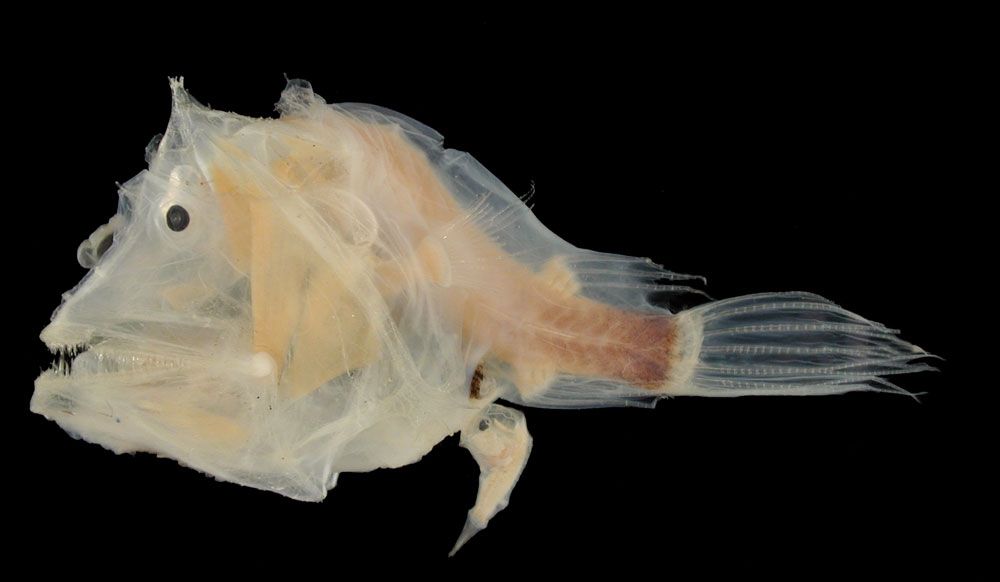| Comments: |
![[User Picture]](http://klab.lv/userpic/150643/5386) | | From: | ![[info]](http://klab.lv/img/userinfo.gif) aleja aleja |
|---|
| Date: | 8. Novembris 2008 - 14:29 |
|---|
| | | (Link) |
|
tāda ir mīlestība
 Some anglerfishes of the superfamily Ceratiidae employ an unusual mating method. Since individuals are presumably locally rare and encounters doubly so, finding a mate is problematic. When scientists first started capturing ceratioid anglerfish, they noticed that all of the specimens were females. These individuals were a few inches in size and almost all of them had what appeared to be parasites attached to them. It turned out that these "parasites" were the remains of male ceratioids. At birth, male ceratioids are already equipped with extremely well developed olfactory organs that detect scents in the water. When it is mature, the male's digestive system degenerates, making him incapable of feeding independently, which necessitates his quickly finding a female anglerfish or else dying. The sensitive olfactory organs help the male to detect the pheromones that signal the proximity of a female anglerfish. When he finds a female, he bites into her skin, and releases an enzyme that digests the skin of his mouth and her body, fusing the pair down to the blood-vessel level. The male then atrophies into nothing more than a pair of gonads, which release sperm in response to hormones in the female's bloodstream indicating egg release. This extreme sexual dimorphism ensures that, when the female is ready to spawn, she has a mate immediately available.[2] The spawn of the anglerfish of the genus Lophius consists of a thin sheet of transparent gelatinous material 2 or 3 feet wide and 25 to 30 feet long. The eggs in this sheet are in a single layer, each in its own little cavity. The spawn is free in the sea. The larvae are free-swimming and have the pelvic fins elongated into filaments. Such an egg sheet is rare in fishes. Wiki
Piedod, ka izpletu tavu žurnālu. | |